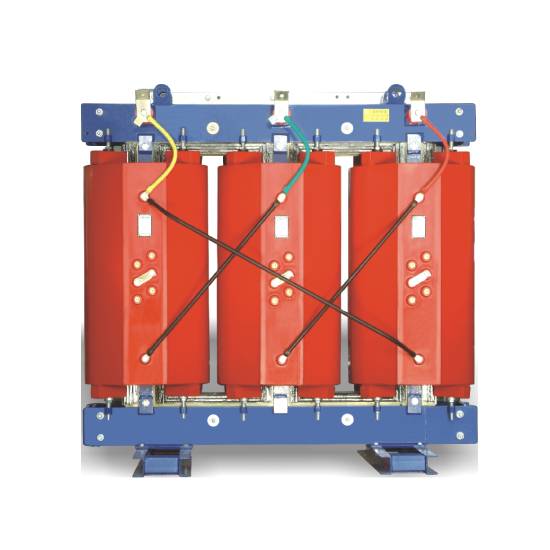Designing a dry type transformer requires precision, expertise, and a deep understanding of electrical engineering principles. Farady, a leader in transformer manufacturing, presents a comprehensive guide on designing Dry Type Transformer. This article will cover key aspects such as raw materials, efficiency, safety, cost performance, and manufacturing techniques, ensuring that your transformer meets the highest standards.
PartⅠ: Understanding Dry Type Transformer
Dry Type Transformer, unlike their oil-filled counterparts, use air as a cooling medium. This design makes them ideal for indoor and environmentally sensitive applications. They are widely used in commercial buildings, hospitals, factories, and other settings where fire safety and low maintenance are crucial.
– Application: Indoor power distribution, industrial plants, commercial buildings, and environmentally sensitive areas.
– Benefit: Enhanced safety, reduced fire risk, and minimal maintenance requirements.

PartⅡ: Key Components and Raw Materials
1. Core Material
The core is typically made from high-grade silicon steel laminations, which helps minimize core losses and improve efficiency.
– Material: High-grade silicon steel.
– Benefit: Reduced energy losses and enhanced transformer efficiency.
2. Windings
The windings are usually made of copper or aluminum. Copper is preferred for its superior conductivity and thermal performance.
– Material: Copper or aluminum.
– Benefit: Improved electrical conductivity and thermal management.
3. Insulation
Insulation materials must withstand high temperatures and provide excellent electrical isolation. Common materials include epoxy resin and polyester.
– Material: Epoxy resin, polyester.
– Benefit: Enhanced electrical isolation and thermal endurance.
PartⅢ: Designing for Efficiency and Performance
1. Core Design
The core design is critical in determining the efficiency of the transformer. Using a high-quality core material and optimizing the core shape can significantly reduce core losses.
– Design Aspect: Optimal core shape and high-quality materials.
– Benefit: Improved efficiency and reduced energy losses.
2. Winding Configuration
The winding configuration affects the transformer’s performance and efficiency. Proper design ensures minimal losses and optimal thermal performance.
– Design Aspect: Optimized winding configuration.
– Benefit: Enhanced performance and reduced electrical losses.
3. Cooling System
Effective cooling is essential for maintaining the transformer’s performance and longevity. Air ducts and proper ventilation are critical in dry type transformer design.
– Design Aspect: Air ducts and ventilation.
– Benefit: Efficient cooling and extended transformer lifespan.
PartⅣ: Ensuring Safety and Reliability
1. Thermal Management
Thermal management is crucial to prevent overheating and ensure the transformer operates within safe temperature limits. This involves designing proper ventilation and selecting high-temperature resistant materials.
– Safety Aspect: Adequate thermal management.
– Benefit: Prevention of overheating and enhanced operational safety.
2. Protection Systems
Incorporating protection systems such as overcurrent protection, thermal sensors, and surge protectors ensures the transformer’s reliability and safety.
– Safety Aspect: Comprehensive protection systems.
– Benefit: Increased reliability and safety under fault conditions.
PartⅤ: Cost Performance and Manufacturing
1. Cost-Effective Materials
Selecting cost-effective yet high-quality materials is essential for balancing performance and cost. Copper, aluminum, and high-grade steel are commonly used for their cost-efficiency and performance.
– Cost Aspect: Cost-effective material selection.
– Benefit: Balanced performance and cost savings.
2. Advanced Manufacturing Techniques
Utilizing advanced manufacturing techniques ensures high precision and quality in transformer production. Automated winding machines and precise core cutting equipment enhance the manufacturing process.
– Manufacturing Aspect: Advanced manufacturing techniques.
– Benefit: High precision and consistent quality.
PartⅥ: Customized Services (OEM/ODM)
At Farady, we offer customized design services to meet specific customer requirements. Our OEM/ODM services ensure that your transformer is tailored to your exact specifications and application needs.
– Customized Services: OEM/ODM solutions.
– Benefit: Tailored designs to meet unique requirements.
Conclusion
Designing a dry type transformer involves careful consideration of materials, efficiency, safety, and manufacturing techniques. Farady’s expertise in transformer design and manufacturing ensures that our products meet the highest standards of quality and performance. With our commitment to advanced technology, cost-effective solutions, and customized services, we provide transformers that excel in various applications. Choose Farady for reliable, efficient, and high-quality Dry Type Transformer tailored to your needs.
Tags: Distribution Ttransformer,MV Regulator,Outdoor Switch,Indoor Switchgear
